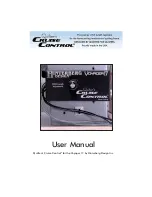
Replacing the Needle
B-30
Be sure to observe the following precautions concerning the handling of the needle. Failure to observe these precautions is
extremely dangerous, for example, if the needle breaks and fragments are dispersed. Be sure to read and carefully follow the
instructions below.
Fabric/thread/needle combinations
The machine needle that should be used depends on the fabric and thread thickness. Refer to the following table when choosing
the thread and needle appropriate for the fabric that you wish to sew.
■
Thread and needle number
The lower the thread number is, the heavier the thread;
the higher the needle number, the larger the needle.
■
Ball point needle (gold colored)
To avoid skipped stitches use ball point needles (75/
11–90/14) with stretch fabrics.
■
Transparent nylon thread
Use a 90/14 to 100/16 needle, regardless of the fabric or
thread.
■
Embroidery needles
Use a 75/11 home machine needle. When embroidering
on heavier fabrics such as denim, use a 90/14 or 100/16
home machine needle.
Replacing the Needle
CAUTION
• Only use recommended home machine needles. Use of any other needle may bend the needle or damage
the machine.
• Never use bent needles. Bent needles can easily break, possibly resulting in injuries.
Fabric Type/Application
Thread
Size of Needle
Type
Size
Medium weight
fabrics
Broadcloth
Cotton thread
60–90
75/11–90/14
Taffeta
Synthetic thread
Flannel, Gabardine
Silk thread
50
Thin fabrics
Lawn
Cotton thread
60–90
65/9–75/11
Georgette
Synthetic thread
Challis, Satin
Silk thread
50
Heavy fabrics
Denim
Cotton thread
30
100/16
50
90/14–100/16
Corduroy
Synthetic thread
50–60
Tweed
Silk thread
Stretch fabrics
Jersey
Thread for knits
50–60
Ball point needle
75/11–90/14
(gold colored)
Tricot
Easily frayed fabrics
Cotton thread
50–90
65/9–90/14
Synthetic thread
Silk thread
50
For top-stitching
Synthetic thread
30
100/16
Silk thread
50–90
90/14–100/16
Note
• Never use thread of 20 weight or lower. It may
cause the machine to malfunction.
CAUTION
• The appropriate fabric, thread and needle
combinations are shown in the table above. If
the combination of the fabric, thread and
needle is not correct, particularly when sewing
heavy fabrics (such as denim) with thin
needles (such as 65/9 to 75/11), the needle
may bend or break. In addition, the stitching
may be uneven or puckered or there may be
skipped stitches.
Содержание 888-G00
Страница 2: ......
Страница 76: ...Embroidering B 66 ...
Страница 122: ...Decorative Stitching S 46 ...
Страница 182: ...Using the Memory Function E 36 ...
















































